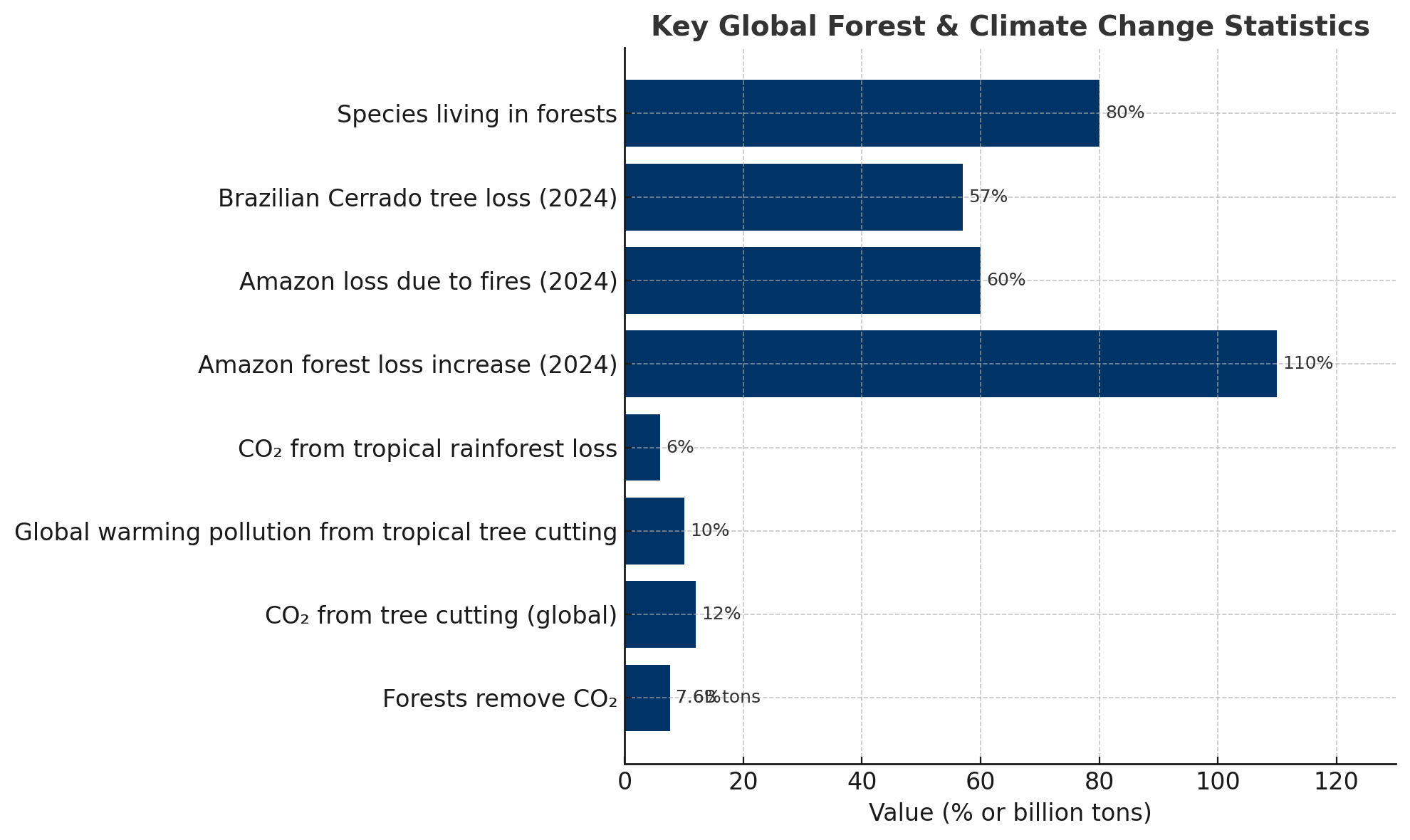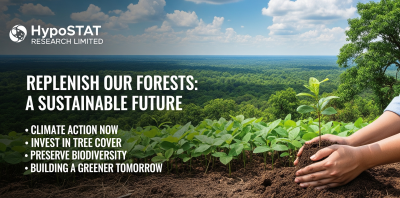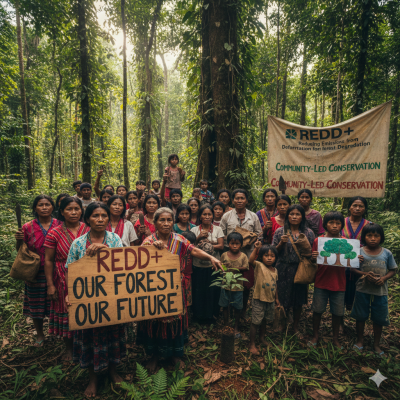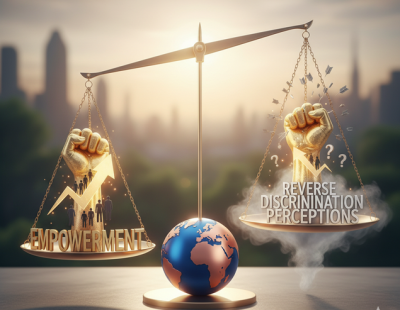In this conversation about climate change, sustainability and global warming, tree cover replenishment must be at the center
Humanity is living at the peak of unprecedented comfort and convenience. The rapidly evolving technologies are redefining how we live, travel, work and learn. Though, as we pursue further sophistication-linked pleasure, convenience and comfort, humans, at best, have turned out to the most destructive species of this planet. Conservationists have come out with facts supporting the view that amidst these lifestyle advancement endeavors, it is important to pause and reflect on how our treatment of the earth and its resources may limit sustenance of species and our future generations. Everyone needs to be aware of the tradeoffs that exist between our current conduct and environmental integrity and sustainability.
At HypoSTAT Research Limited, our attention is drawn into humanity’s view of the global tree cover and earth habitability link. Our tree-clearing habits to create wealth and erect infrastructures are narrow-minded. Picture this; World Resources Institute reported that by 2022, the global forest loss hit 6.6 million hectares, with 96% of this occurring at the tropics. The rate of tropical forest loss alone totaled 3.7 million hectares in 2023 alone. [i] This is equivalent to losing ten soccer fields of forest per minute. Yet deforestation accounts for around 12% of global CO? emissions, with 10% specifically from tropical deforestation and 6% due to the annual loss of tropical rainforests. After fossil fuels, deforestation is the second-largest source of CO? emissions, contributing about 11% of global GHGs, with tropical deforestation responsible for nearly 10% of pollution-linked global warming. The current tree-clearing pattern is myopic, indiscriminately destructive, and risky, not only to the communities depending on forest resources but also the potential of the earth to sustain and nurture the earth’s species.
We are sure that while reading this, you can recall a unique place—perhaps a childhood town, forest, river, or park—that were once lush and vibrant with trees but today, the green beautiful sceneries have been replaced by a grass patch, concrete structure or left barren. HypoSTAT Research Limited view that, not as nostalgic reflections, but a vital call for humanity to reconsider its views of tree cover. Clearing trees to build something may seem to be some form of development, but a deeper look at it may indicate the unsettling loss—a silent signal that urgent action is needed. Will we stand the shame of calling ourselves a progressive society when every thicket that breathed freshness in our spaces is replaced with concrete and stale air?
Our advocacy for maintaining a tree replanting culture and strong criticism of those who cut down trees to erect tall buildings or create golf courses without considering the consequences of their actions looks like a harsh and foundation-free opinion. Right? HypoSTAT Research Limited is not anti-development. We appreciate the value of our individual efforts to uplift themselves to a higher economic status. We also recognize working economic systems—capitalism, socialism, and communism—and how industrial progress and general prosperity linked to them. Our stance is that continuing with the current tree clearing without replacement signals a fundamental human flaw: uncontrolled and destructive greed whose consequences annihilate nearly all the current climate change mitigation efforts.
Critical Statistics that we need to pay Attention to
| Metric | Value |
|---|---|
| Number of people who work in forest-linked industries annually | 50 million |
| Amount of money that forest-based industries contribute to the globe annually[i] | 450 billion |
| Global forest loss in hectares by 2022 based on current reports[ii] | 6.6 Million |
| Amount of precipitation that will be lost in the Congo forest by 2100 if current tree cutting trend persists | 8-10% |
| CO? removed from atmosphere through sequestration[iii] | 16 billion tons |
| CO? released through burning of fossil fuels[iv] | 8 billion tons |
| CO? released annually as a result of deforestation offsetting nearly half of this sequestration | 8.1 billion tons |
| Estimated carbon held by the Amazon forest[v] | 48 billion tons |
Forests remove an estimated 7.6 billion tons of CO? from the atmosphere annually. This amounts to clearing about 20% of total global emissions. Cutting and burning trees releases stored carbon, accelerating global warming. Brazil’s Cerrado also lost 57% of its tree cover to fires. After clearing 20% of the Amazon, Brazil now ranks top among the greenhouse gas (GHG) emitters. In 2024, the Amazon biome saw a 110% increase in forest loss, with 60% attributed to climate change-linked fires. These ecosystems that are being lost not only carbon sinks but also biodiversity hotspots, home to 80% of the world’s land-based species.

Those who cut down trees to burn charcoal and produce timber in the third world need to be called out. The wealthy individuals that cut down trees to create golf courses are equally destructive, because the carbon sequestration capacity of the cut down trees is always higher than the grass they plant. Good-looking concrete and beautiful furniture cannot address GHG emission challenge, cycle carbon naturally and create rain. How will the notorious tree cutters make money after the last of the indigenous trees is converted to a beautiful conference table and the place where it stood left barren?
What We Can Infer from the Statistics
Tree cover loss translates to general deterioration of environmental integrity, climate change, and community suffering. Those who engage in indiscriminate tree cutting without restoring them are become inadvertent enemies of climate change mitigation. Why? Because every felled tree reduces Earth’s carbon storage potential. a hotter, drier, and more extreme global environment. Since a majority of us have not faced the challenges that a tree-less earth could pose directly, we are not free to leave our kernels of comfort and broaden our view of the problem.
By looking at what is happening in the Amazon, it is evident that unlike any other species, humans seem to be the worst creatures as far as the earths habitability is concerned. The rate at which forests are being cleared without replenishment is a clear indication of their appetite for degrading the Earth for short-term gains. Erecting concrete is good for development, but it should not be carried out at the expense of tree cover loss, especially the indigenous ones. Failure to consider how we view and treat tree cover will inadvertently contribute to unimaginable harm to humans and ecology. This is because trough transpiration, and carbon recycling, trees regulate the atmospheric CO2, temperature and rainfall patterns.

As we look at how we can mitigate pollution, we should look at how tree cover reduction escalates drought, freshwater shortage, and food insecurity, affecting the most vulnerable communities today. With the disruption of the carbon and water cycles, CHG emission and destabilization of our ecosystems through tree cutting without replacement, we are not going to win the war against climate change. This supports our main idea is that the uncontrolled deforestation tendencies, particularly without replanting and nurturing the replanted seedlings to maturity erodes all climate change control efforts.
The Way Forward
HyposTAT Research Limited understands that all is not lost. We might not be able to substitute our tree products in entirety. However, restoring the tree cover that we lose as we pursue financial gains is mandatory to protecting the livelihoods of tens of millions employed in forest-based industries, today and tomorrow. Climate change efforts will fail if we ignore the actions of those who cut down trees without replenishing them. It is imperative that we balance development with tree planting and nurturing stewardship to ensure a livable planet for ourselves and those who come after us. Prioritizing the restoration of cleared tree cover is our primary recommendation.
Restoring our planet’s lost green cover with trees is our duty. This will be one of the clearest, most practical ways to demonstrate care for both present and future generations.
Government have a responsibility of clarifying the essence of replanting trees, not as a formality but taking care of them till they mature to ensure the tree cover is restored. Those who erect structures should also be inspired to incorporate tree spaces in their design and construction process. We also recommend financial incentives to be directed to forest conservation advocates who nurture seedlings to maturity.
Credit
World Resources Institute – Global Tree Cover Loss 2023
MDBA – Water Cycle Educational Resources
UN – Economic Contributions of Forests
Forest Declaration – Global Forest Assessment 2023
World Resources Institute – Forest Carbon Sequestration Insights





